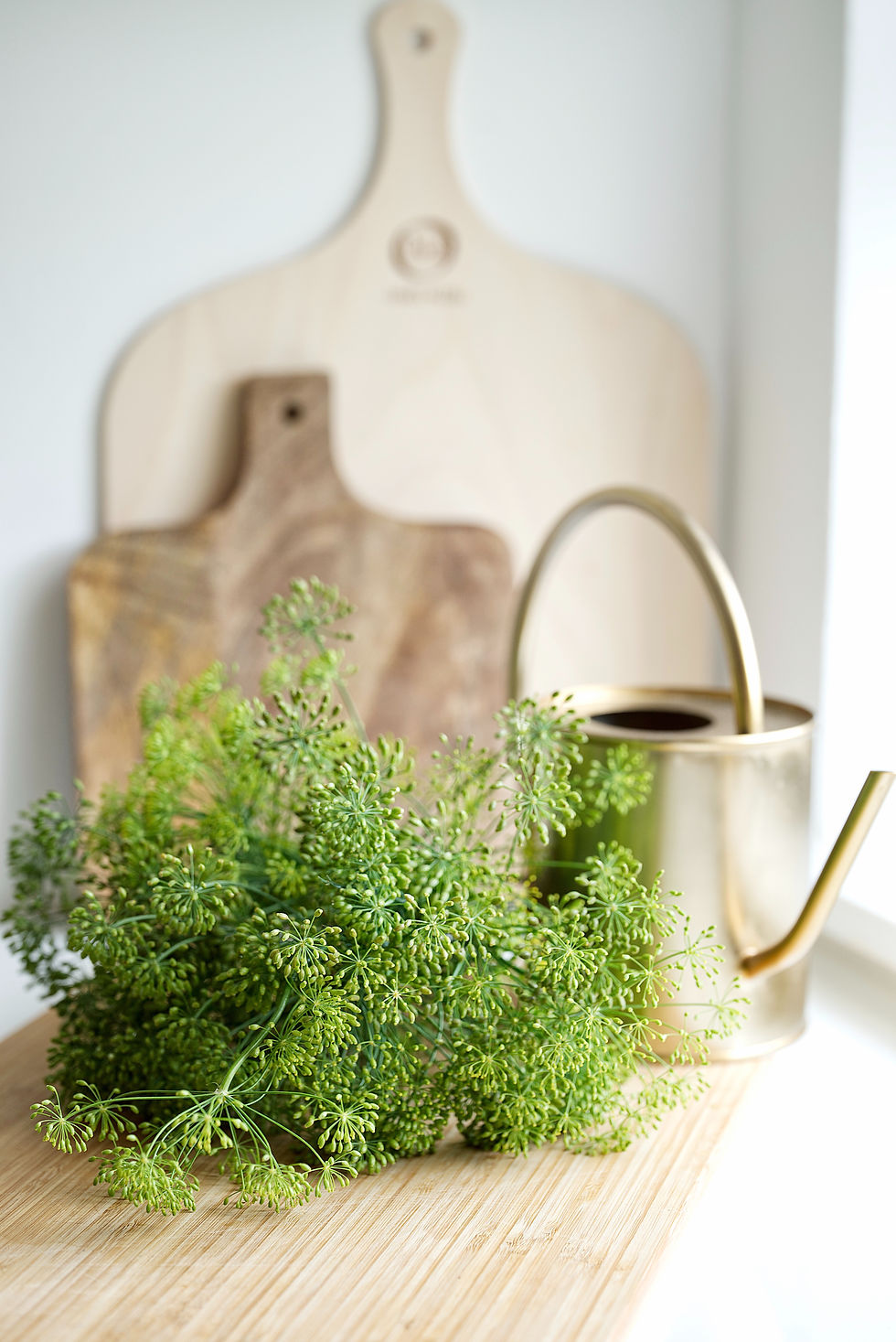What's the Dill? The many health benefits of the little green herb.
- Colleen Woods, MS, RDN, CLC

- Apr 29, 2023
- 2 min read

Dill is a green herb with a mild flavor some relate to pickle, parsley, and even licorice. In addition to its contribution to flavor, dill is also noted for its role as a functional food.
What Makes Dill So Healthy?
Dill Fights Infection
Dill, a member of the carrot family (1), is a functional food because it has health benefits beyond basic nutrition. Dill is an anti-microbial, anti-fungal, and antioxidant (2). This means dill is powerful at fighting infections.
Dill Improves Metabolism
It has also been shown to:
improve metabolism of fats
help extract energy from food
aid in digestion (2)
Dill Helps with Cardiovascular and Diabetes Risk Factors
Several meta-analyses of randomized control trials found that dill did in fact have the ability to lower LDL cholesterol, fasting insulin, and insulin resistance (3),(5).
Research is ongoing to determine if high doses of dill might decrease fasting blood sugar levels as well, but so far this has not been seen (3).
Other Potential Benefits of Dill
Although more research is needed to prove the scientific evidence of these, some cultures have used dill for treating:
stomach ailments
colic
hiccups
bad breath
flatulence
hemorrhoids (4)
Stronger evidence suggests that dill can even act as a bug repellent, reduce menstrual cramps. and may help with depression (2)!
How to Use Dill in Food
Dill tastes like a mild pickle. In fact, the green herb is where "dill pickles" get their name and flavor from.
Dill makes a great addition to:
roasted potatoes
cooked carrots
any mayo-based salad
anything else you enjoy having a little pickle flavor added to
Because it's so mild, it's difficult to use too much dill in a dish. A tablespoon or more of dill in a family-sized recipe like macaroni salad, potato salad, or those mentioned above is well within reason to season the meal.
Try some dill on your next meal for an easy nutrition boost.
References
(1) USDA. Anethum L. dill. Natural Resources Conservation Service. Retrieved July 20, 2017 from https://plants.usda.gov/core/profile?symbol=ANETH
(2) Axe, J. (2016). 8 surprising dill weed benefits. Dr. Axe: Food is medicine. Retrieved Feb. 22, 2017 from https://draxe.com/dill-weed/
(3) Mousavi, S.M., Pizarro, A.B., Akhgarjand, C., et al. (2022). The effects of Anethum graveolens (dill) supplementation on lipid profile and glycemic control: a systematic review and meta-analysis of randomized controlled trials. Critical Reviews in Food Science and Nutrition, 62:21,5705-5716,DOI: 10.1080/10408398.2021.1889459
(4) Tayarani Najaran, Z., Ahmad Emami, S., et al. (2016). Essential oils in food preservation, flavor and safety. London. Victor R. Preedy, Department of Nutrition and Dietetics, King’s College London. https://doi.org/10.1016/C2012-0-06581-7
(5) Jalili, C., Moradi, S., Mirzababaei, A., et al. (2021). Effects of Anethum graveolens (dill) and its derivatives on controlling cardiovascular risk factors: A systematic review and meta-analysis. Journal of Herbal Medicine, 30. https://www.sciencedirect.com/science/article/abs/pii/S2210803321000968





Comments